The Soviet snow storm
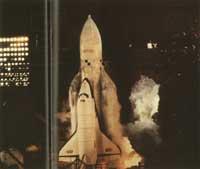
At three o'clock in the morning of November 15, 1988, the Soviets launched the Buran space shuttle. During the night, the staff of the Baiconur space center slowly filled and with special attention the fuel tanks of the launcher. The circulation of motor vehicles was prohibited in a radius of ten kilometers.
When the three in the morning were about to fit the engines of the energy launcher. As a first step, the launcher carries four rockets with an impulse of 740 tons. These four-metre high rockets are powered by kerosene and liquid oxygen and have extraordinary performance

Before landing and on the same launch platform were fitted the four hydrogen engines of the Energy. These engines are the second step of the launcher. Each of them produces an atmospheric impulse of 140 tons.
With a total momentum of 3,550 tonnes, the 2,400 tonnes of Energia-Buran grew to the sky of Baiconur, covered by the aurora borealis. Gradually it climbed 4.7 m per second and left the platform. After 150 seconds the speed was 150 km/s and the four rockets of the first pass were released.
Thanks to the parachutes carrying the rockets at the two ends, they began to fall slowly and when they were a meter from the ground, the sensors put in place small retrobeds so that the landing was made progressively. In this way, the rockets are recovered with hardly any damage and can be reused. In the case of the North American ferry, the rockets are driven to the sea and must be repaired by corrosion of salt water before reuse. The accident of Challenger was the result of a breakdown in the first pass rockets, so in the last flights of the North American ferry have used non-abrasive propulsive rockets.
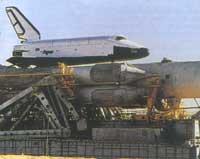
When in orbit Buran behaves like any other satellite. At 3h 47 in the morning it reached 250 km of height and then the engines of the ferry fit to get an adequate orbit.
This first mission of Buran had a very important characteristic that so far not all the other missions have had: being a fully automatic mission, the automatic landing of the space had to be done for the first time on Earth. The objective was not regular, since on the surface of the Earth Buran had to identify and pose the landing strip of 4,500 m of length.
For this purpose the Soviets had to use an advanced cyber system.
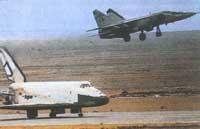
The landing was carried out without problems at 6h 25h, with a delay of one second on the expected time. In the last minutes, two Mig 25 starts helped Buran i on the descent and facilitated the landing operation by providing navigation data.
Buran
, which touched the ground at a speed of 300 km/h, but with three parachutes of 75 m 2, the start was quickly reduced. When this was 50 km/h, the parachutes were automatically released. The landing was without defects.
Is it worth it?
Buran
No one denies the great Soviet achievement. However, there are those who ask whether it is worth it or not. The launch of Soviet ferries has been very expensive (the same is true of the North Americans). It is said that the Soviets can do the same work Buran can do with the normal pitchers they currently have and at a much lower cost (the Americans are not in the same situation, because their pitchers are demodè).
Buran
the development of the ferry has cost 10 billion dollars and it has taken ten years to do so. The cost has been huge. In addition, the cost of each launch of Buran is 80 million dollars, ie 24 times the cost of the launch of the launcher Soiuz.

Prestige is what is behind the Soviet ferry, showing that the Soviets are able to do what the Americans do.
However, this problem of prestige will be very expensive to the Soviets, since they plan to make five ferries.
The words of Roald Sagdeev, former director of the Moscow Space Research Institute, adequately describe the situation:
“Putting a load in orbit is much cheaper and simple with any classic trigger. Buran's first automatic flight is a significant technological achievement...It has come and gone, but the flight has not had scientific interest. In my opinion, the North American experience with ferries shows that the future of these ships is dark. The Americans and we know that work is not worth it.”
BuranWorking in the field |
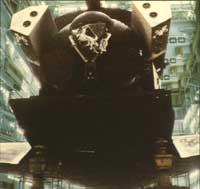
According to the spokesmen of the Soviet space agency Glavkosmos, Buran's most important work is to bring objects to the ground in orbit. Buran and his sisters will not be used to place satellites and material in space, but in satellite repair. In addition, Buran can be coupled to new generation Mir-2 space stations. Therefore, one may think that it can be used to carry material and personal, but it is not believed to be done. Buran is more comfortable for the crew than Soyuz TM, but the latter are much cheaper, although only 500 kg of materials can be brought to Earth.
To supply space stations, to transport the material necessary for the construction of structures in space, etc., the Soviets have piloted and automatic ships seriadas, tried and reliable, very cheap. They have a wide range of launchers: To place the launcher Kosmos in a low orbit of 0.45 tons, the launcher Tsiklon for 4 tons, the launcher Vostok for 4.7 tons, the launcher Soiuz for 7 tons, the launcher Molnila for a geostable orbit of 1.5 tons, the launcher Proton for 20 tons and the Energy for 100 tons. Consequently, the use of these launchers in these tasks seems the most appropriate.
As mentioned above, the cost of launching the Buran ferry is 24 times higher than that of Soyuz. If we compare the load that both can put in orbit with this cost, the consequences are clear: With the soyuz release can be put in orbit 5.6 times more charge for the same cost.
As a conclusion, as a conclusion
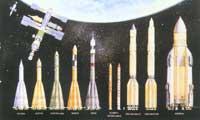
Some consider that the Soviet military is those who have special interest in the ferry program. It is nothing more than a fact, but the Buran project is led by General Alexander Maksimov. On the other hand, mixing militarism with the prestige we have mentioned above would not be very surprising, since throughout history this has been very frequent. There may be a warning behind the program, if the North Americans develop the war of galaxies, we will not be left behind and as we have done the ferry we will also do.
However, and to conclude, the Soviets have again demonstrated that they are at the tip of space technology.





